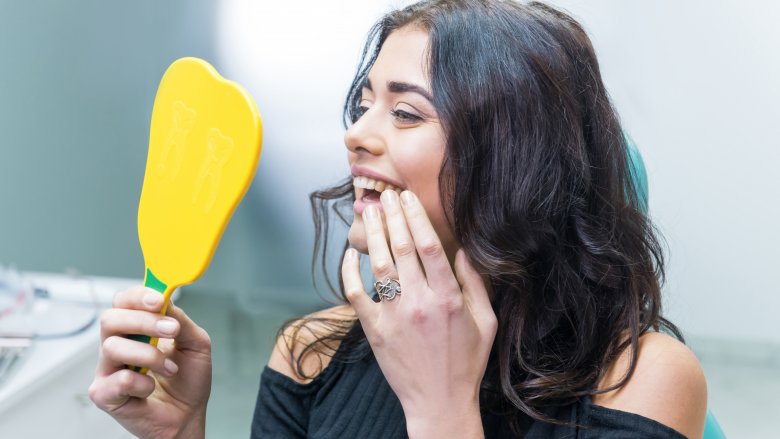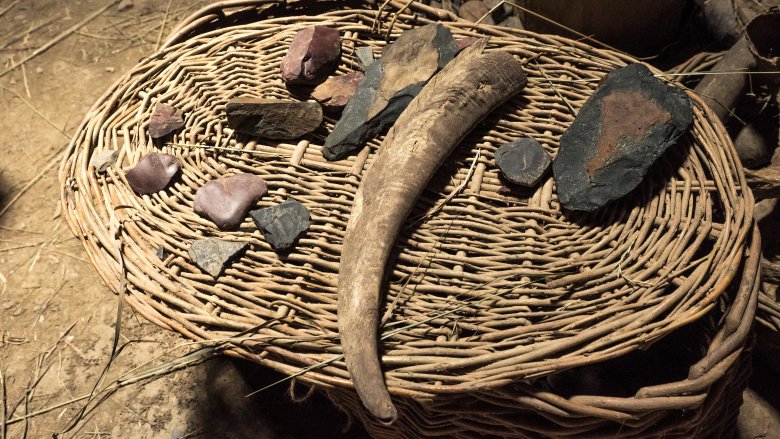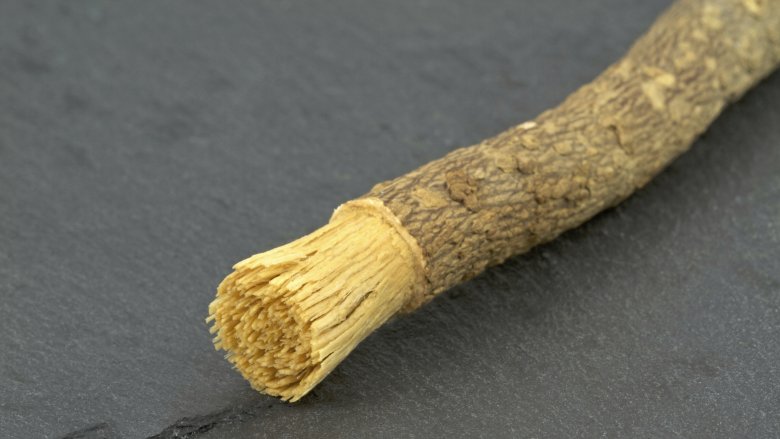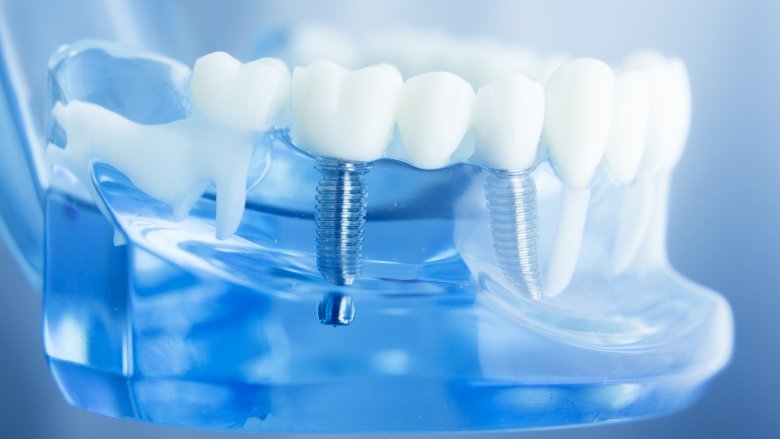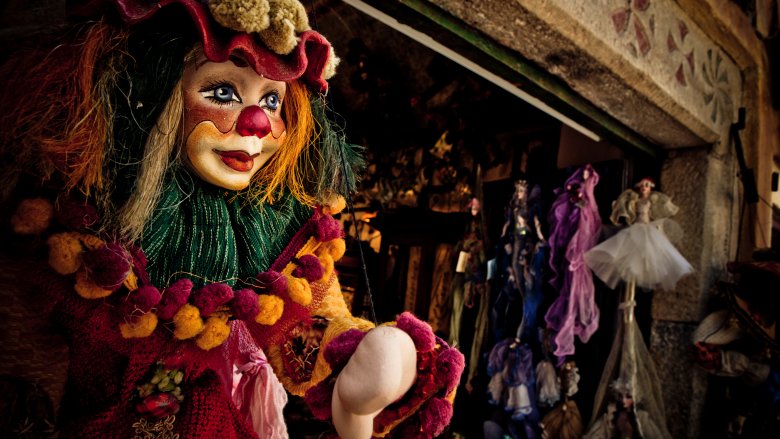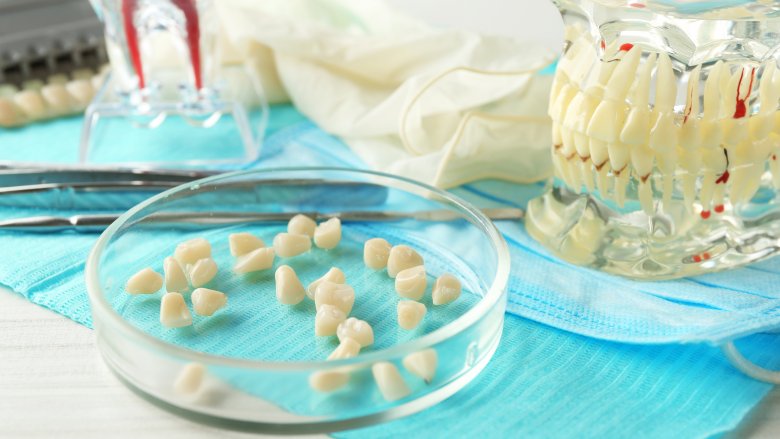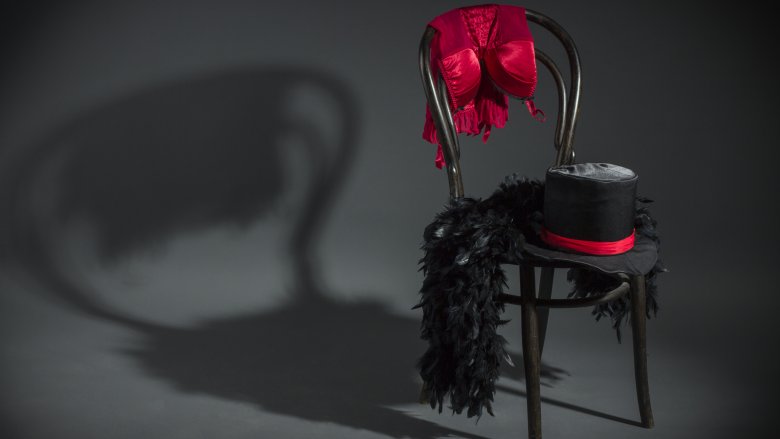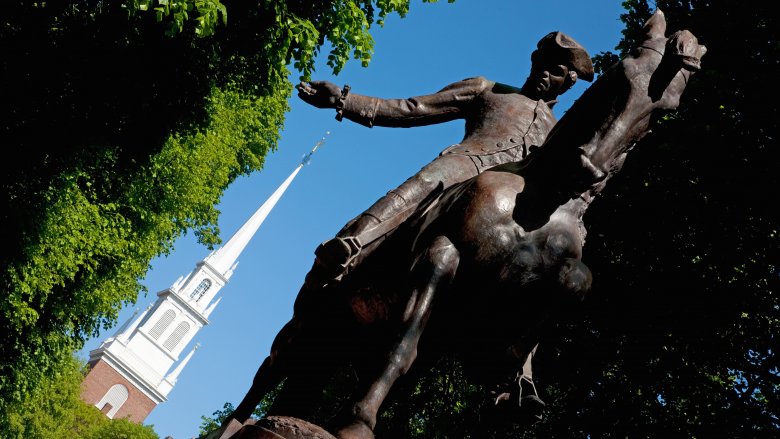The Disturbing History Of Dentistry
No amount of stickers and praise could make you even slightly all right with going to the dentist when you're a kid, and it's even worse when you're an adult. It's more painful, you're paying for it, and for some reason, grown-up dentists don't hand out the stickers.
But honestly, we have it pretty good today. There are things like anesthetic, clean tools, Novocain, and even the most basic things like privacy. It wasn't always the case, and no matter how bad you might imagine dentistry was centuries ago, it was probably worse. Mankind has been having problems with teeth since they were walking upright and, well, since they had teeth, and according to the British Dental Association, it wasn't until 1878 that dentists needed to do things like register as a practicing dentist. It wasn't until 1921 they had to prove they had the skills to be a dentist, and that wasn't really long ago. Before that, any old schmuck with a hammer could knock your teeth out for you, and that's not a joke.
Ancient dental tools included rocks
No one likes it when their dentist pulls out the drill, or that little hook for scraping right down to your soul. But at least you're not a Neanderthal because your dentist would be reaching for sharp rocks.
David Frayer, a paleoanthropologist at the University of Kansas, wrote a paper on Neanderthal dentistry with help from his own dentist, Joe Gatti (via the Washington Post). They were looking at four teeth that came from a cave in Croatia and belonged to a Neanderthal who lived 130,000 years ago. Gatti was surprised the condition of the teeth looked weirdly similar to teeth he's seen in the 21st century, including showing scrapes and scratches as if from toothpicks. (And, when he says "toothpick," he means a sharp piece of bone or a stick. Probably.)
Now, let's fast-forward a bit to archaeologists working in Italy and their discovery of the first cavity ever — that we know of, at least. It was done around 14,000 years ago, and archaeologists (via IFLScience) replicated a few different ways the infection might have been dug out of the tooth. The most likely was scraping and chipping away at the tooth with a small, sharp piece of flint. The same researchers (via LiveScience) also studied a cavity that had been filled around 13,000 years ago, with bitumen. Yes, that's tar. Mmm.
Teeth-whitening has always been a thing
History is filled with people who have gone extra lengths to make sure they have a white smile, and if you think some of the products out there today taste bad, you would have hated earlier ones.
White teeth were incredibly important to the ancient Egyptians, especially those high on the social ladder. The Canadian Academy of Dental Hygiene says they used a paste made from white vinegar and ground pumice, and they'd smear it on their teeth with the frayed end of a stick. At around the same time in ancient Rome, they were using something even worse: human urine. The weird thing is, it probably worked due to the high ammonia content.
It can't get worse than that, right? Arguably, it can. In the 17th century, there was a major advancement in teeth-whitening. Barbers (yes, barbers) could be asked to take a metal file to the surface of the teeth, which would then be treated with nitric acid. It wasn't until the 19th century that we discovered hydrogen peroxide could do pretty much the same thing, without the gross or the pain.
Ancient home tooth care was awful
Today, the biggest challenges you face in the toothpaste aisle are remembering who needs the sensitive stuff and trying to remember if you like spearmint or peppermint better. (And should you gamble on the orange flavor? Hmmm.) Commercial toothpastes are a relatively recent invention, and Colgate was the first on the market in 1873. According to the Telegraph, there were plenty of other options out there before, and they were just as gross as you'd expect.
One of the oldest recipes comes from fourth-century Egypt. The recipe was preserved on a piece of papyrus and called for a mix of rock salt, mint, pepper, and dried iris flower. One Austrian dentist actually tried it, and said even though it made his gums bleed, it wasn't as bad as some of the other toothpaste formulas he'd seen.
So, what were in those? Colgate has put together a history of toothpaste and says ancient ingredients — which were usually mixed up into a paste and sometimes applied with a "toothbrush" like the one shown above — included things like pumice, burnt eggshells, ashes from the hooves of oxen, crushed oyster shells, and crushed bones. It stayed that way until things started changing in the 1800s, with the use of soap, charcoal, chalk, and betel nuts. Orange sounds great now, doesn't it?
Dental implants made of what?
Shiny dental implants might be a super-trendy, super-weird way to show off some wealth, but they're nothing new. According to Texas A&M University Health Science Center, some of the earliest dental implants date back to ancient Egypt and 2500 B.C. Those first implants were done mostly to stabilize other teeth, making them practical rather than decorative, and they used gold wire. A few thousand years later, the Etruscans were using gold bands and creating replacement teeth from ox bones. The Phoenicians had a similar idea, but they were carving their teeth from ivory while the Mayans were using shells for their implants.
LiveScience says the ancient Celts had their own version of dental implants, and one excavation at a French site dating back to the third century B.C. yielded a skeleton with an iron pin firmly implanted into the jaw. Since it was one of the incisors — one of the teeth in the front, that you can see when a person talks — they think it was decorative instead of merely functional.
They also say archaeologists believe some ancient dentistry was done post-mortem, too, so the recently deceased could head into the afterlife with a full set of teeth, ready to enjoy whatever post-worldly delights awaited them. All those grapes aren't going to chew themselves!
The tooth drawers
The British Dental Association says a number of people have counted dentistry among the services they offer, including the clergy, apothecaries, jewelers, wig-makers, and even blacksmiths. Which one would you go to?
There was another option during the Middle Ages: the tooth drawer. Henry IV even had one on staff. The BDA says from the 14th century onward, tooth drawers for the common folk tended to travel the country and set up at markets and fairs. Then they'd attract attention in a weird way: They would dress as jesters and wear necklaces of the teeth they'd pulled. Dr. Alun Withey of the University of Exeter says they sometimes offered quack remedies to relieve tooth pain, and many would lance your boils for you at the same time. Now that's a one-stop shop.
If you're thinking there can't be that much money in tooth drawing, you're probably right. The Excruciating History of Dentistry says tooth drawers might have made their wages other ways, according to art dating from the 16th to 18th centuries. Some tooth drawers may have worked with accomplices who would pick the pockets of the people who were in pain ... or of the crowds of people who stood around to watch the tooth-pulling. So really not much has changed, except the bill comes from your insurance company today because it's more polite.
Waterloo teeth
By the 19th century, sugar was becoming a bigger part of European diets. Since dentistry was still a pretty amateur affair, tooth decay was widespread. So were dentures, but along with dental hygiene, modern dentures hadn't been invented yet, either. Supply for the demand came from a terrible place: the Battle of Waterloo.
The French Army was thoroughly and completely spanked on June 18, 1815, and by the time the battle ended, there were around 51,000 dead. The entrepreneurial spirit stops for no one and nothing, so enterprising people took to the battlefield to loot what they could. According to The British Library, that included the teeth of the dead. They were appropriately called Waterloo Teeth and were sold to dentists for use in dentures. They worked so well the same thing happened in the American Civil War and the Crimean Wars, and it was pretty exciting. The teeth were better quality than what they'd been using until then, which was basically the often-diseased teeth of executed criminals and teeth taken from bodies snatched by the grave-robbers.
There's a slightly encouraging side to this story, at least. Not everyone was cool with having the teeth of the dead put into their own mouths, and by the 1820s a silver and goldsmith named Claudius Ash made major improvements to porcelain teeth. By the start of the 20th century, using dead men's teeth was less common.
Vaudevillian dentistry
Ask anyone who's had some teeth pulled and they can tell you anesthetic is a wonderful thing. According to the Wood Library-Museum of Anesthesiology, anesthesia as we know it only really kicked off in the early to mid-20th century. Before that, things like cocaine and chloroform were used, and in the case of the vaudeville dentists, dancing girls were also used.
Edgar Parker — who later changed his name to Painless Parker — actually graduated from the Temple University dental school in 1892, says Atlas Obscura, but that's the most normal thing about the story. Temple still has a bucket filled with thousands of teeth Parker extracted over his 59 years as a practicing dentist, and most of those teeth he pulled while he was on the road.
Parker traveled the country with a vaudeville-style show, complete with buglers, acrobats, magicians, jugglers, and dancing nurses. He even had an elephant he rode in on, and once he took the stage, it was all about the tooth-pulling. His record was 357 in a single day, all drawn from people who were first given a cup with a drink that was mostly whiskey or laced with cocaine, and who were, in theory, distracted by the dancing showgirl-nurses. Did it work? The American Dental Association called him a "menace to the dignity of the profession," but it's possible they were just jealous of his elephant.
Pulling teeth to save the mind
At the turn of the 20th century, dentistry and psychiatry collided with pretty horrible results. At the center of the clash were Dr. Henry Cotton and his Trenton Psychiatric clinic, and his theory of autointoxication. The basis of the theory was that mental illness stemmed from a bacterial infection somewhere in the body, and by removing that infection, you'd remove the mental illness. It was wrong, but it didn't stop him from removing a whole pile of body parts from all kinds of people.
In addition to things like gall bladders, colons, and thyroids, he also removed a ton of teeth. When he first started his work, he found a huge percentage of his patients had rotten teeth, and it seemed logical that was a major cause (via io9). When removing them didn't work, he assumed the infection had spread and started cutting out other things.
Seems logical enough ... right? Things spiraled seriously out of control, and Cotton advocated pulling teeth as a preventative measure. You have to say this for him: He practiced what he preached, not only pulling some of his own teeth, but the teeth of his wife and sons, too. He became ridiculously wealthy and well-respected, while his patients (the 70 percent or so who survived) added malnutrition onto their list of problems, and his sons committed suicide.
The Toothache Tree
Hate the dentist, but have a toothache? There's at least one dentist-free option that could give you a little extra help, and it's in Nepal.
Atlas Obscura says it's called Vaisha Dev, or the Toothache Tree. It's more accurately a tree stump that forms the entirety of an open temple in Kathmandu, and while it's right in the middle of a dental district, it's a completely pain-free option for asking for a little divine help with a toothache.
To appeal to Vaishya Dev, the Newar god of the toothache, hopeful patients nail a coin onto the stump that's already pretty well covered in coins. Legend says there's an idol in the middle of the shrine that should help you, but if the god doesn't, the dentists who have set up shop in the area probably can. Even if you don't rely just on divine help, OMG Nepal says there's a tradition that passers-by don't miss an opportunity to say a quick prayer for their dental health. Brilliant marketing? Absolutely. Does it work? Couldn't hurt!
Pain relief for teething babies
Teething babies have always been a problem, and in the 19th century, teething was blamed for a significant percentage of infant deaths. Even Homer wrote about the difficulties babies had teething, and claimed the harder teething was, the better and stronger a child would be. Small comfort to sleep-deprived parents, maybe, but the ancients also offered up plenty of solutions to the pain.
From the first to the sixth centuries, countless children were smeared with the brains of a hare or lamb because teething isn't traumatic enough. Charms and amulets were also used, and by the Middle Ages, babies were given roots to chew on along with their brain-salve. That sounds perfectly reasonable compared to the pain relief of the 16th century, which was to slice open the gums to let the teeth through. That remained a popular solution for way too long, and by the 18th century it was augmented by leeching and doses of mercury salts and opiates which ... well, you'd probably guess that part worked pretty well.
People were terrified their babies would die from the complications of teething, and according to M.P. Ashley's research in the British Dental Journal, centuries of parents believed their children were at risk of complications like seizures, paralysis, malnutrition, and death. Babies would have their gums lanced as many as ten times, and the basic principles of the treatment were discussed into the 1950s.
Forensic dentistry and Paul Revere
Anyone who's watched a crime drama has seen the basic ideas of forensic dentistry at some point. That's the discovery that so-and-so faked their death and left someone else's body to burn, and they know it because dental records don't match. It's not as new as you might think, and there's a case to be made that America's first forensic dentist was Paul Revere.
You probably remember from history class he was a silversmith and an engraver, but he was also trained as a dentist and advertised his services in the 1770s. Strange Remains says one of his patients was Dr. Joseph Warren, a physician who had Revere fit him with two ivory teeth.
While Revere's work in the Revolution is pretty well documented, Warren's was no less important. He directed a group of spies he'd planted among the British, and it was Warren who sent Revere out on his famous ride. (That ride didn't happen the way you were told.) Warren later headed up the Massachusetts militia and was ultimately killed at the Battle of Bunker Hill. He was dumped into a mass grave, and it wasn't until nine months later the Americans were able to dig up the grave and start giving their fallen a proper burial. Needless to say, identification was difficult, but Revere identified Warren's body by the set of false teeth he'd made for him. Silversmith. Patriot. CSI guest star.
